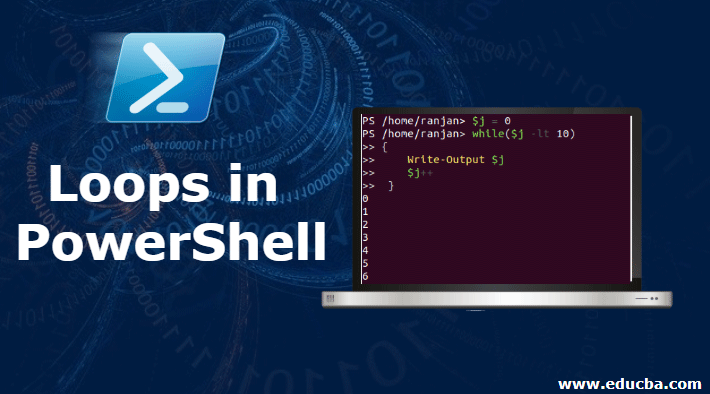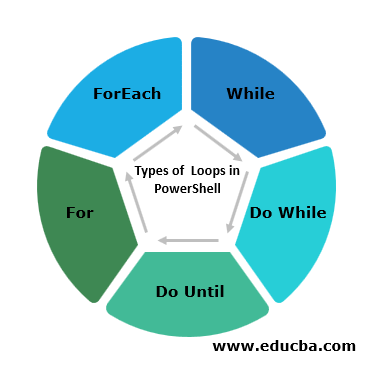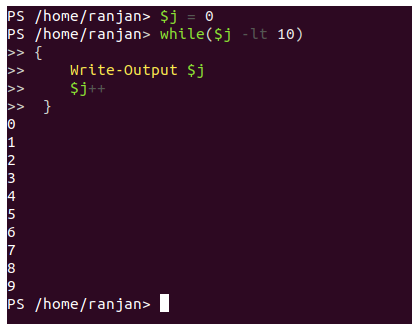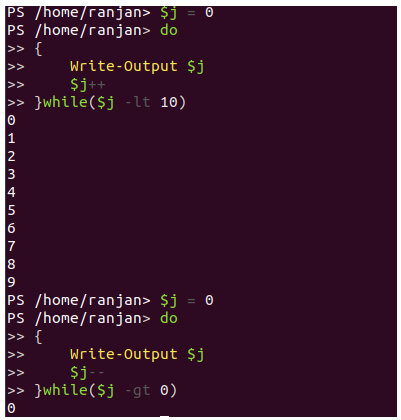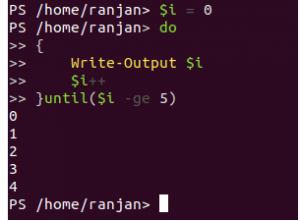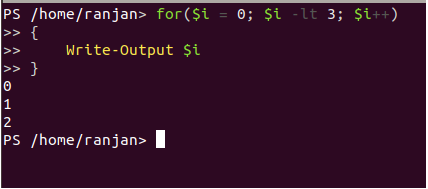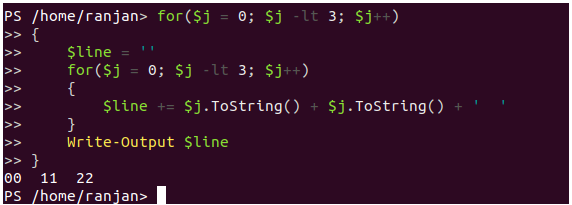Updated March 23, 2023
Introduction to Loops in PowerShell
We will always need loops if we have something repetitive work, In loop, we run a piece of code or any statement on a repetitive basis. One real example, suppose in a school there are 20000 students and because of some reason, the university decided to give 5 marks extra for examinations to every student. So the university has decided to give these 5 marks to every student except those whose attendance is less than 100 days. Now you just assume how staff will do it, they will have to check every student’s marks and attendance of the year. But Same thing with the help of Any loop it could have been done very easily, by creating an array of students with their marks and attendance dates. Hereby using a loop we are able to save extra efforts. Let us understand Loops in PowerShell in detail.
Types of Loops in PowerShell
There are many ways to run loop in PowerShell, but it always depends on your requirements and feasibility of the program, for example, if you want to execute at least once for any array than we should use do-while loop else there are for loop and for each which are good.
Types and their examples are given below:
1. While
While statement takes a condition as argument and execution of statement inside a while loop depends on the condition, that means if a condition is a success then it will execute statement else not.
Syntax:
while(condition)
{
Statement 1
Statement 2
….
}
Example:
$j = 0
while($j -lt 10)
{
Write-Output $j
$j++ }
Below is the screen for above code execution
2. Do While
Do while is similar to while loop only difference is it will execute at least once, that means it will execute do a block for the first time and while block if a condition is true. In the below syntax do block executed for the first time for sure.
- Do: This block executes for first and once when execution starts.
- While: Execution of statement 1 and statement 2 totally depends on the success of the condition.
Syntax:
Do
{
Statement 1
Statement 2
….}while(condition){
Statement 3
Statement 4
…..
}
Example #1:
$j = 0
do
{
Write-Output $j // this block will execute first time
$j++
}while($j -lt 10)
Example #2:
In this example do block will execute for the first time even condition was not true.
$j = 0
do
{
Write-Output $j
$j--
}while($j -gt 0)
The screen for both programs is shown below
3. Do Until
Do until is little different than do while, in do until the execution will continue till return negative result by “until block”.two things are major here.
- Do: This block will keep executing until the block condition gets failed, which means until the block return a negative value.
- Until: Do block statement 1 and statement 2 execute until conditions return negative results.
Syntax:
do
{
Statement 1
Statement 2
….
}until(condition)
Example:
$i = 0
do
{
Write-Output $i
$i++
}until($i -ge 5) //keep checking condition
In “do until” block we can see the execution of do block will continue till the “until block” condition is returning a positive value.
Below is the screen for above code execution
4. For
For statement runs a statement list zero or more times based on an initial setting. In the below syntax of for loop, there are three important sections
- Initialization section: In this section, it assigned initial value for any variable, this section runs once for the first time.
- Condition: In condition parts, we write our condition for which loop will run, which means the execution of statement block always depends on the success of condition parts if the condition is true then statement block will execute else not.
- Operation: In this block, we can increase, decrease or change the value of the initializing a variable or any things according to our requirements.
Syntax:
for($initialisation; condition; operation)
{
Statement 1
Statement 2
….
}
Example #1:
for($i = 0; $i -lt 3; $i++)
{
Write-Output $i
}
Output screen of above code
Many times one for loop is not enough to complete our requirements, so we can use nested for loops. We should try to avoid nesting of loops as their time complexity may go very high if not handled properly. Below is an example of nested for loop .
Example #2:
for($j = 0; $j -lt 3; $j++)
{
$line = ''for($j = 0; $j -lt 3; $j++)
{
$line += $j.ToString() + $j.ToString() + ' '
}
Write-Output $line
}
Output: 00 11 22
5. ForEach
“Foreach” runs statement blocks for consecutive time till the last item of an array. Good things about forEach statement is, we do not have to write any separate code to extract an array of items.In general “foreach” is a optimized version of “for” loop which giving inner item of array without writing any programs. Here, it simply checks for item inside array on which we are running “foreach” loop if any item is there it will execute statement 1 and statement 2 blocks.
Syntax:
foreach($arrayItems)
{
Statement 1
Statement 2
…..
}
Example:
$numbers = 23,21,22,78
foreach($number in $numbers)
{
“$number is now =“ +$number
}
Below screen show above executions
Benefits of Loops in PowerShell
The biggest benefit of using a loop is, it reduces too much manual work also it is very good to control the big size of data for a similar type of activity on it. Let’s say I want you to print 1 to 1000000 and I told you that you can add 1 to every number divisible by 2, which is an even number. Then if you start printing one by one and try to add 1 to every even number it will take too much time. So, a better and easy way you suggested was just repeating this process of adding one to the number until we reach 1000000. The biggest benefit we are getting from loop is we are reusing the same piece of code, we do not require to write the same code for lakhs of data it will automatically execute code till the end.
Below are a few points of Benefits
- Increase code reusability, which makes code smaller
- The faster calculation for big data, saving a lot of manual labor
- The redundancy of code is less.
An example with its benefits
Question: print upto 1000.
Without loop,
Write-Output 1;
Write-Output 2;
Write-Output 3;
Write-Output 4;
…so on
Till 100
With loop,
$x=1..100
foreach($y in $x){
Write-Output $y;
}
Recommended Articles
This has been a guide to Loops in PowerShell. Here we discuss types of Loops in PowerShell along with their benefit. And we discovered that loops are a very powerful tool with less effort to use the same code. You may also have a look at the following articles to learn more –

